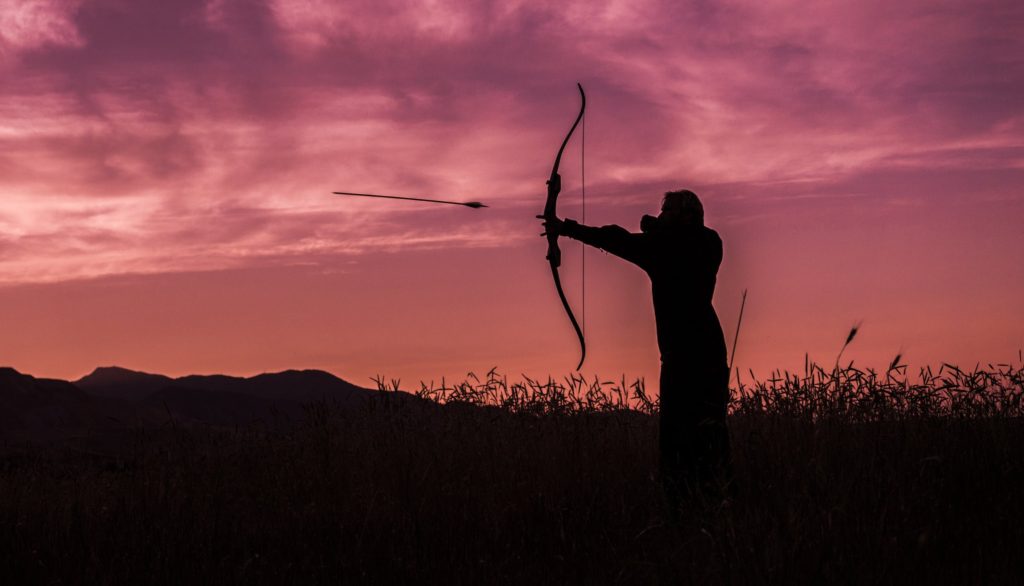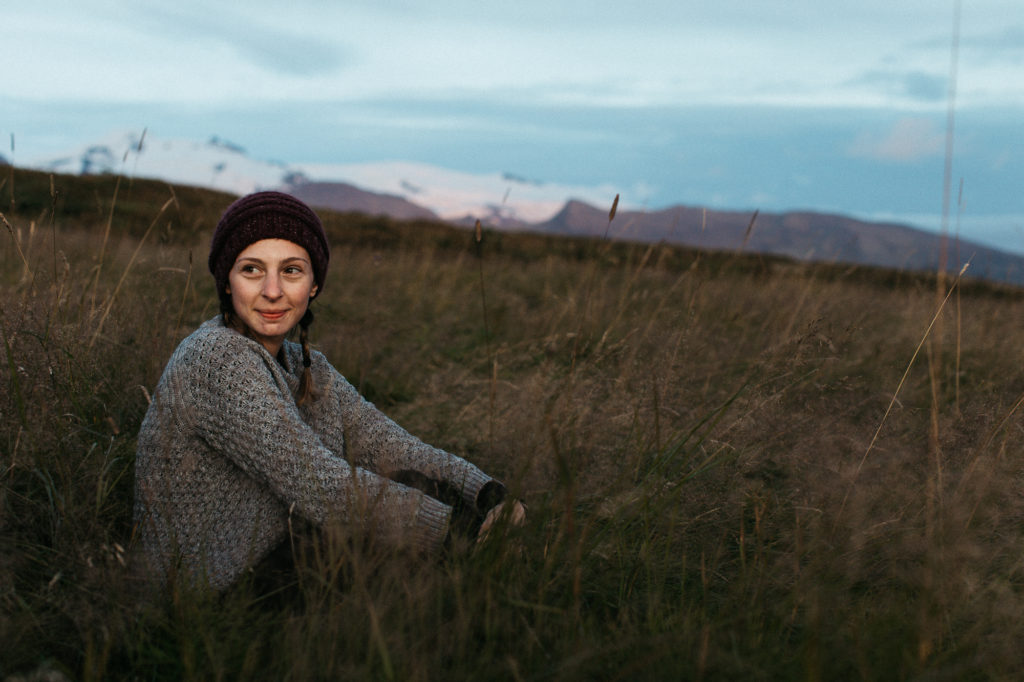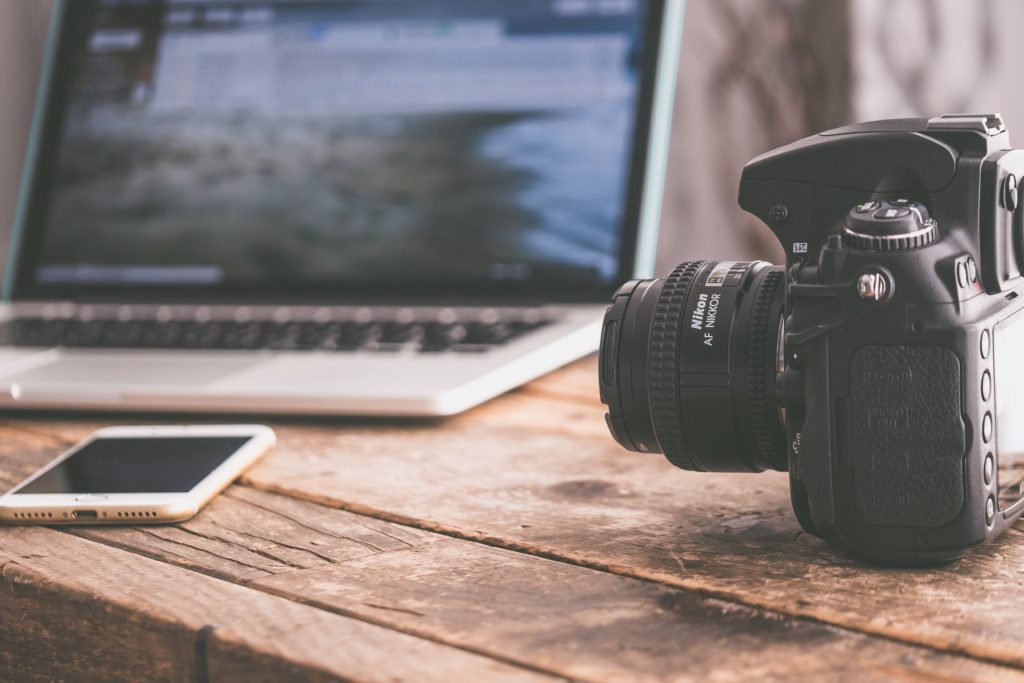Last Updated: February 14th, 2020
How much should I charge for photography?
For many photographers transitioning from photography for pure fun to photography as a career – one of the biggest and earliest hurdles you’ll have to conquer is figuring out how much to charge people for your photography services.
I can admit, when I started off – it was definitely weird to start charging people hard earned money for me to take their pictures. I think a part of this is because I simply love photography – and in a perfect world, I wouldn’t want to charge people to do something I love doing.
But…then reality kicks in…
Doing photography as a service takes a large time investment, a lot of energy, and often pushes me outside of my personal comfort zone. Not to mention, some shoots actually cost me money as I put it into the latest and best camera equipment, and the wear and tear on my car (+ gas money) as I often will drive hours away to do a shoot is not something to take for granted.
By this stage in my 3+ year career in photography, I’ve managed to effectively set prices that do a couple simple things:
- Cover my expenses and provide me with a living wage
- Feel realistic for my prospective clients to pay
- Require that people see my work has value
- Allow me to run a stable business for years to come
In the rest of this post, I’m going to show you how to set effective prices for your photography business. I will walk you through some of the essential things you need to get right before even writing out your pricing, then show you exactly how to put together pricing that works for you.
All of this is designed from the ground up for total newbies – but even experienced photographers who are struggling to get bookings can learn a thing or two.
Pricing Prep – Part 1: Identify Your Purpose
 Creating effective pricing for your photography services is built on thinking about a few simple things.
Creating effective pricing for your photography services is built on thinking about a few simple things.
By figuring out what the point of doing photography is and identifying how much you need to make to be happy to continue doing photography as work – you will be in a better position to set prices you can be proud of.
While this might be a “boring” section for some of you, it is VERY IMPORTANT. I could just tell you to charge $500 per portrait session – but giving you an arbitrary number is meaningless without context.
Don’t worry – the specific pricing figures will come, but you’ll be empowered to put together these numbers to suite your specific needs soon!!
Why Photography?
Before I show you how to set your own pricing, I think it’s important to give a little context.
 My story: I’ll keep this brief (if you want a longer version – check out our About page). I grew up loving photography – often using it for personal expression back in middle and high school. I often had a camera around me but didn’t think making photography a career would be possible. This led me to go to school and get a degree in Graphic Design and resulted in me working at the same graphics job for 7 years. When Chris & I got married, we realized the potential to take photography and make it into something that was profitable. We established our photo business a few months later, and now 3+ years into this, I’ve managed to go from spending money to start my business to having a business that brings in six figure revenues and left my day job to pursue photography full time.
My story: I’ll keep this brief (if you want a longer version – check out our About page). I grew up loving photography – often using it for personal expression back in middle and high school. I often had a camera around me but didn’t think making photography a career would be possible. This led me to go to school and get a degree in Graphic Design and resulted in me working at the same graphics job for 7 years. When Chris & I got married, we realized the potential to take photography and make it into something that was profitable. We established our photo business a few months later, and now 3+ years into this, I’ve managed to go from spending money to start my business to having a business that brings in six figure revenues and left my day job to pursue photography full time.
The reason why I share this story with people who want to pursue a photography career, are struggling to keep theirs afloat, or just want to make some beer money from it – is because it is all very achievable!
So – one of the biggest questions you need to answer for yourself (and feel free to share with me in the comment section at the end of this post!) is: why do you want to make photography your career?
Photography: A Side Gig or Full Time Job?
Next up, you’ll want to define what your business goals will be.
I know plenty of photographers who just see it as a side hustle – a way to make some quick money on the weekends. Then they return back to their full time day job.
On the other end, there are people like me who just want to do photography and nothing else.
Both approaches are totally fine – but you need to define for yourself which camp you fall into. This is because doing photography for extra cash is very different than making it a full time gig – and this will be reflected in your pricing!!
What will be your photography niche?
 Because “photography” is so vast – you will (most likely) want to narrow down your target audience.
Because “photography” is so vast – you will (most likely) want to narrow down your target audience.
The reason for this is boiled down to the old quote we’ve all heard before: “Jack of all trades, master of none.”
Many photographers make the mistake of trying to market themselves for any photography need. In reality, when people and companies are looking to hire a photographer – they want someone with proven expertise in the area they need photography services.
Think about it like this:
- Does a bride-to-be want to hire a wedding photographer or someone who photographs everything?
- Does a corporation want to hire an event photographer to cover their big event or someone who photographs everything?
- Does a law firm want to hire a portrait photographer to take studio headshots of their team or someone who photographs everything?
When making purchasing decisions, we all want to know the person we’re working with is experienced and really into their work.
Today – just being “a photographer” is pretty meaningless. Defining who, what, and where you take photographs will go a long way to attracting new clients who want to work with you.
If you’re unsure – one piece of homework I’ll give you to take away from this article is really think about what your audience will look like. Do you want to photograph weddings? Do you want to take portraits? Are real estate, corporate events, landscape work, etc. more your speed?
Pricing Prep #2: Define Your Financial Goals
 It can be easy to fall into the trap of thinking you need to set prices on your photography services that look similar to other photographers in your area. While that will be something you should take into consideration, the truth is much different: you need to define how much money YOU need to make and figure out how to make it!
It can be easy to fall into the trap of thinking you need to set prices on your photography services that look similar to other photographers in your area. While that will be something you should take into consideration, the truth is much different: you need to define how much money YOU need to make and figure out how to make it!
Budgeting 101: Financial Planning for Effective Photography Pricing
Making a budget can be pretty boring, so I’ll keep this short, sweet, and to the point.
In order to price your photography services, you need to be able to answer one simple question: how much money do I need to make to pay my bills & be happy?
When Chris & I reviewed our financial situation and answered this ourselves, we were surprised that the number was much lower than we first thought it would be. We won’t complain.
The way we figured out our finances was simple – we wrote down a list of all our expenses like you’ll see below by month (note: figures are not reflective of our specific financial situation for privacy purposes):
- Mortgage/Utilities: $1,500
- Groceries: $400
- Gas: $60
- Extra Spending Money: $200
- Hulu/Netflix: $20
- Car loan: $250
- Car insurance: $100
- Total: $2,530/month
With expenses of $2,530/month, we can multiply this by 12 to figure out how much we need to live every year. That number is: $30,360/year.
This is the most important number for you to have BEFORE you start setting your photography prices. We’ll be coming back to this later on in this post as we help you put together your own pricing sheet!
Budgeting 102: Wants vs. Needs
There will be times in your pursuit for a career in photography where money will be tight. My husband & I worked full time day jobs for several years while ramping up our photography business – and saved money like hoarders.
Much of our planning was designed around the long term, and to help make this easier for you – you need to define what things are necessary expenses and what things you just like.
On a simple level, let’s look at wants vs. needs we have in our day-to-day lives:
Wants:
- I want to buy a $100 purse
- I want to go to a bar and drink $30 in martinis
- I want the nice car ($30,000) vs. the used one ($10,000)
- I want the $300,000 house vs. the $200,000 house
- I’m sure you can list a hundred things you probably want too!!
Needs:
- I need a place to live
- I need food to eat
- I need a bed to sleep in
- I need transportation to-and-from my job
- I need to pay the bills I currently have
For the most part – the things we need are just common sense. They are the bare-bones things that make most people feel comfortable. The things we want tend to be “extras” – they make us happier, give life more meaning (sometimes), and can make things more fun.
There is nothing wrong with wanting things. In fact, I set up my personal budget with some extra spending money set aside. This requires taking a hard look internally and figuring out how much extra money you’d like each month.
For Chris & I, we decided we like going out to eat at least once a week, buying clothes here and there, going to the movies, and traveling are all things that are important to us – so we set aside money to do these types of things.
To achieve financial goals, you may need to have more control over spending on things you want from time to time. Often, these types of things can be replaced with cheaper alternatives. Say your friends want to go out to dinner at a fancy restaurant, how about recommending making food together at someone’s place instead?
As with most financial things, this one can be deeply personal. Everyone’s needs are different, you just need to evaluate what works for you.
Business Budgeting: It Costs Money to Make Money
 One of the hardest parts about starting a photography business is investing in the camera gear you will need to create quality work.
One of the hardest parts about starting a photography business is investing in the camera gear you will need to create quality work.
Below are a few facts about my photography business you’ll find fun to know:
- Chris & I started shooting on budget equipment – a Canon EOS Rebel with a 50mm kit lens to be exact.
- We upgraded to a Canon 5D Mark III camera when we decided to start doing work more professionally. This was a $3,000 investment out of our personal savings account.
- In the past few years, we’ve spent around $30,000 dollars on professional quality equipment. We paid for it exclusively with earnings we made through our business while we supported ourselves personally with day jobs.
- We are out of the “investment phase” but do have some recurring expenses (“overhead”) that we pay for such as our client booking platform Honeybook, mileage tracking app MileIQ, and some other services.
Oh – and let’s not forget about taxes! 🙂
I point all of these things out because it should be clear: photography isn’t exactly a cheap industry to break into. You can absolutely stick to cheaper costing gear – but it will end up being a limiting factor as you aim to bring your prices up over time.
Your pricing should be designed with the equipment you will need to purchase in mind.
While it may be difficult to lock in exactly how much it will cost, you should be able to get a rough idea by simply looking at what equipment you will want to purchase as money becomes available. One way to do this is simply write out the gear and price tags like this:
- Camera: $3,000
- Camera lenses: $8,000
- Camera bag: $150
- Flashes: $2,000
- Batteries: $200
- SD cards: $500
- External Hard Drive: $300
- Total: $14,150
Using this estimate, you would need to plan to spend a total of $14,150 dollars on this equipment to offer the best possible service.
Of course, not everything will be necessary on day #1 – so you would also want to identify what is absolutely required and what purchases you can hold off on for a little while.
In our experience, we purchased a new camera body first. We put off buying more obscure and niche lenses until way down the line. It’s reasonable to pace yourself in this area, and your earliest pricing should reflect your image quality + equipment quality to an extent.
For more help in the area of photography gear, Chris & I put together comprehensive buying guides in our Recommended Gear section. There we share our insights and recommendations based on our personal experiences using the equipment to help us make money as our business would grow.
Seriously – even if you don’t need those pages right now, click this link and bookmark the page to reference in the future. You won’t want to miss out on the info there!!
It’s Time to Set Your Pricing
 Now that you’ve spent some time thinking over your purpose as a photographer and evaluating your financial well-being, we can take all of that information and turn it into something tangible.
Now that you’ve spent some time thinking over your purpose as a photographer and evaluating your financial well-being, we can take all of that information and turn it into something tangible.
Creating your first pricing sheets is a little scary – but don’t worry, you’re approaching this better than 99% of people already by actually planning out your approach based on the advice I’ve given above!!
3 Steps to Get Your Photography Prices Right:
- Add Your Total Yearly Expenses + Total Estimated Gear Investment Expenses
In earlier sections of this post, I identified these two important numbers:
- $30,360/year for personal expenses (mortgage, bills, grocery, gas, etc.)
- $14,150/year for gear investment expenses (buying cameras, lenses, etc.)
- Grand total: $44,510
Remember: You will want to plug in your own numbers based on your specific needs. Do this now!
- Divide the Grand Total Expenses by 12
I like to divide this big figure by 12 to help identify how much I should make per month to support my personal self + my business. The math looks like this:
$44,510 divided by 12 = $3,709/monthly expenses
- Set Prices that Allow You to Cover Your Monthly Expenses + Some Extra
Let’s start by thinking over some example scenarios where you are making your ideal amount of money. I’d consider the ideal earnings to be making enough to cover all of your expenses and then some.
With total monthly expenses of $3,709 – let’s say you want to set a target of earning $4,000 a month (or $48,000 a year – a realistically achievable number based on average earnings of photographers in the USA).
This is totally doable – and the way you approach it will be based on individual sale value (how much a person spends on your service) and volume (how many people are booking your service).
Example scenarios:
- Wedding photography: You set your lowest priced option at $2,000. This means you need to book 2 weddings a month in order to cover your expenses and pay for the new gear you need.
- Portrait photography: You set your lowest priced option at $350. This means you need to book 11-12 portrait sessions a month to cover your expenses and pay for new gear you need.
Please note: These figures are simplified to help illustrate things for you. Reality throws in curveballs like taxes, which is a bigger topic that can get really specific depending on where you live.
In my experience, it’s “easier” to make a photography career out of higher priced services like weddings and other events. Smaller shoots are absolutely doable as well – but you will want to ramp up your prices quicker as you progress. We know some portrait photographers charging upwards of $1,000 for a couple headshots – an amazing feat for sure!
To help make a more compelling pricing sheet, picking up Signature Edit’s Ultimate Photographer Pricing Guide Photoshop Template.
The Power of the Upsell
 With your baseline pricing locked down, you now get to move on to phase 2 of putting together your photography packages.
With your baseline pricing locked down, you now get to move on to phase 2 of putting together your photography packages.
This is an extensive topic in and of itself, which I’ll be covering in the future on this blog – but to put it simply:
Photographers have the opportunity to sell additional add ons to their clients allowing them to increase their revenues.
Some common upsells include…
- Additional photo sessions (like an engagement shoot)
- Albums and prints
- RAW photo files
- Flash drives with images on them
- Commercial use of images
As a simple example, let’s go back to looking at our base pricing for a wedding photography package. If we’re able to make $2,000 on a client’s booking but can convince them to add in a $500 photo album – we increase our revenue to closer to $2,500 for that one sale (minus the cost to have the album printed!).
Do this enough, and you won’t have to book as much to make ends meet!
The Photography Market is Competitive
 On paper, crafting prices that work for you is fairly easy. Getting people to actually want to pay those prices is where things get to be more challenging.
On paper, crafting prices that work for you is fairly easy. Getting people to actually want to pay those prices is where things get to be more challenging.
You may have already heard this, but the photography industry is “saturated.” There are so many people taking photos for money that it can make it very hard for a new photographer to come up.
This was actually the exact sentiment that drove me to go to college and get a comfortable degree. It also turned out to be the same thing I saw, acknowledged, and fought against as I created my own successful photography business despite it.
With so much competition out there, especially in major metro areas, it is not always easy to “make it.” There will be slow months and those where you sacrifice some of the things you like doing just to make it. But – there will also be really good months where you feel like you’re just raking in stupid amounts of money, too!
All of this competition will impact your approach to pricing – especially when you are just starting out.
You will want to offer discounted services, and services cheaper than your competitors.
Did you know?
I started my photography business shooting weddings for free to get experience and help build my portfolio. My first paid wedding was done for $500 dollars with full day coverage – which ended up being close to 16 hours of shooting. Now, my average booking comes in at around $3,600 as my services are more in demand thanks to building a solid reputation, having a lot of experience, and creating great work.
How to Discount Photography Services the Right Way
 Discounts should be used to entice people to give your photo service a try. They make total sense when you are just starting out, have a limited (or non-existent) portfolio, and just lack the experience more established photographers have.
Discounts should be used to entice people to give your photo service a try. They make total sense when you are just starting out, have a limited (or non-existent) portfolio, and just lack the experience more established photographers have.
It’s useful to think about how you relate to discounts in your everyday life. For example, when shopping around for clothing, I know my eye is always drawn to the clearance rack – where I know I may be able to find something good and save a couple bucks. The mentality is pretty much the same for people wanting to have a photo session.
There are 3 main ways to apply discounts to your services:
- Reduce cost by a set dollar amount (like $100 off)
- Reduce cost by a fixed percentage (like 10% off)
- Include free add ons to make a regular priced purchase more enticing (like a free photo album or print)
Reasons to offer discounts:
- You need the business (just starting out, slow season, etc.)
- Holidays (offer specials to entice bookings around Christmas, Valentine’s Day, etc.)
- Any others you can think of?
Now that I am more established, I rarely offer discounts on my services. If someone would like my photography at a lower cost, I will normally reduce things offered in an established package (like offering less hours of coverage at a wedding). Unfortunately, since this is a business, you will also have to learn to say “no” to work that doesn’t meet your requirements – as time goes on, you’ll learn this is very important.
You’re Prices = All Set. Now What?
In this post, I gave you the background information you need to make a good decision on your pricing, and walked you through how to effectively choose your pricing based on your personal needs and the business climate around you.
What comes next will require some trial-and-error, and you should continue to raise your prices regularly (I did so every 3 months or so) until you reach a plateau where you are not receiving many bookings.
With set pricing under your belt, you should aim to refine all aspects of your “image” to reflect higher costs. This will include:
- Revising your branding
- Having a concise brand statement
- Establishing a high quality portfolio of your best images
- Refining your website to be sleek, easy, and appealing to new clients
- Market your services through social media and other platforms
The list goes on…
Now – after reading through all of this, do you have any other questions about setting your prices? I’m happy to help you get it just right!
Feel free to drop me a line using the contact form below or leave a comment below this post.
I look forward to hearing from you and seeing how you make photography happen!!